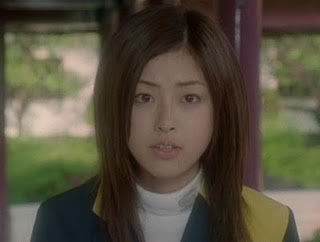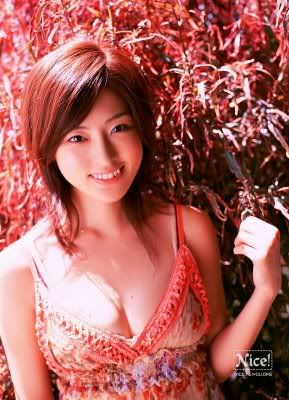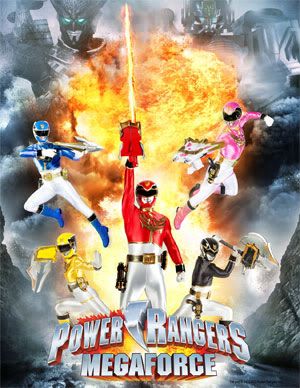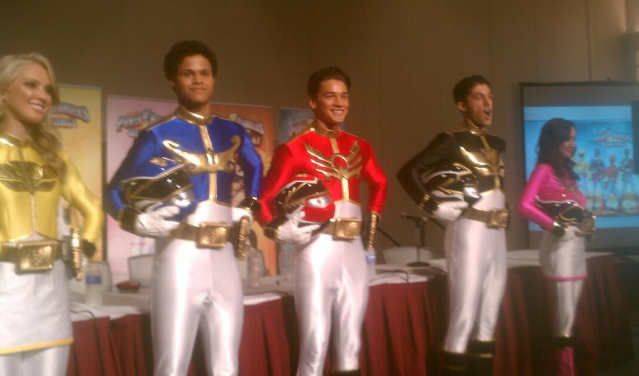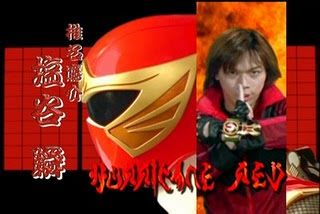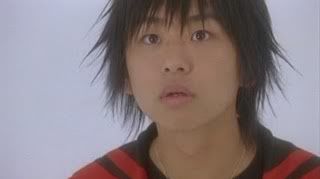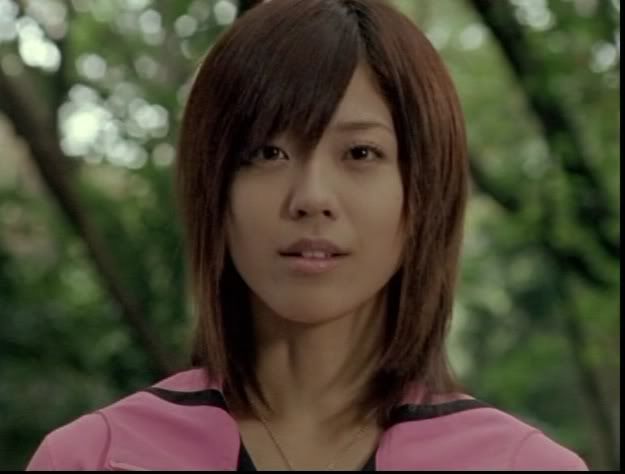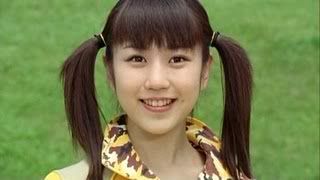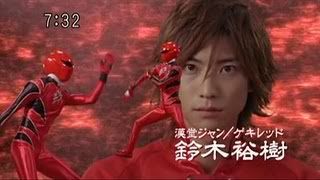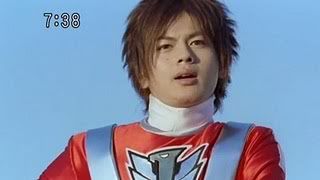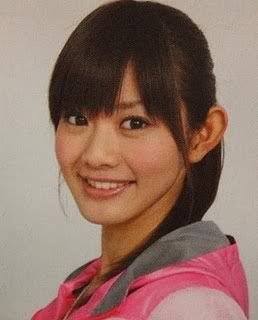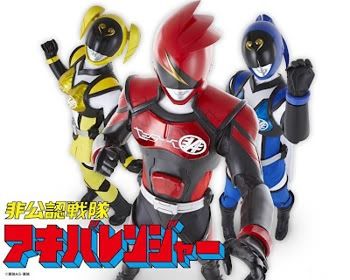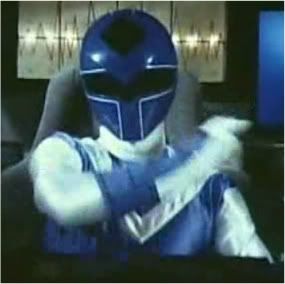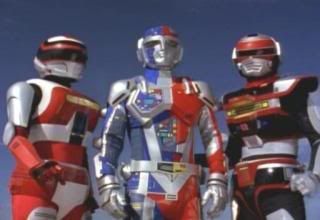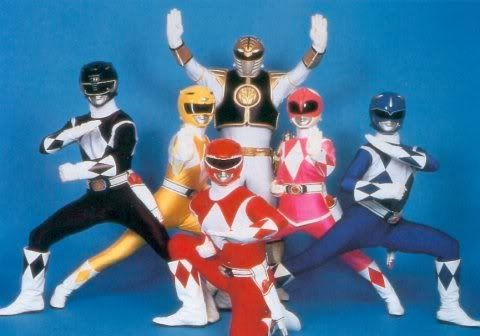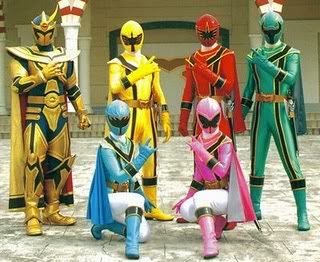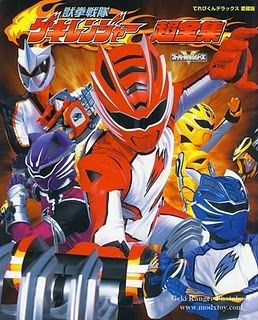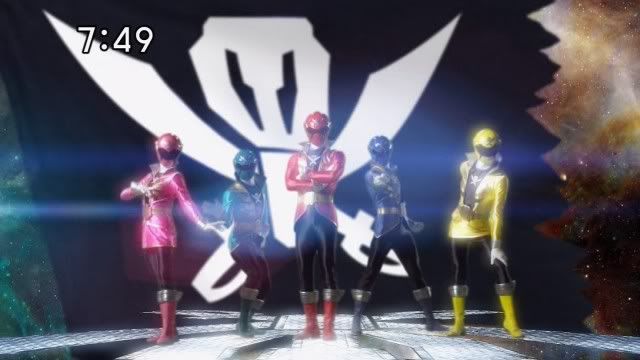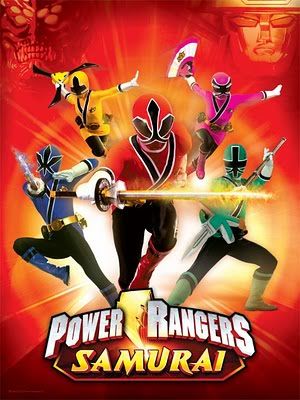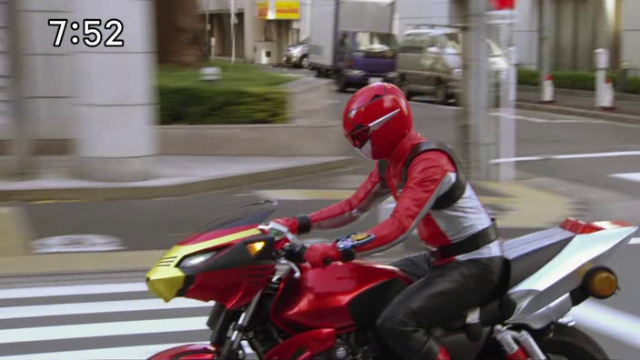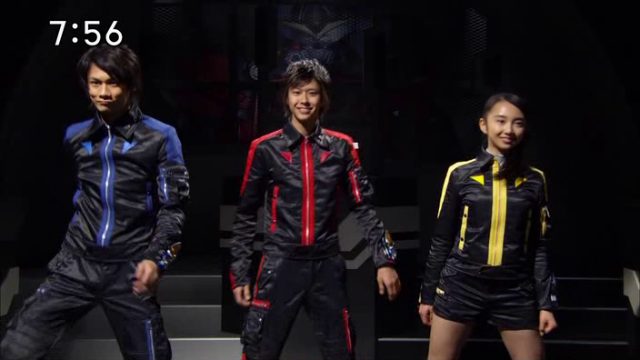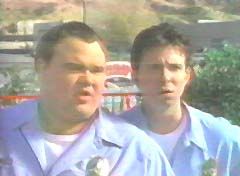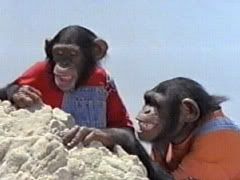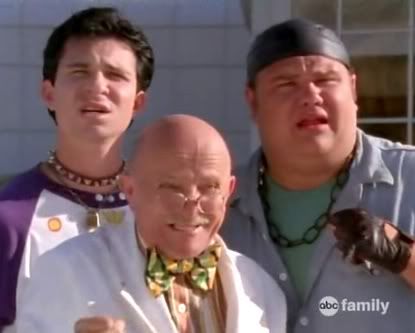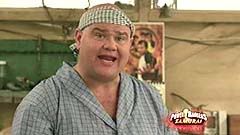
I like to apologize for my lack of activity recently. I've been busy between moving into a new place and going to school part-time out of town. To bring ing the new year, I'm reviewing Kamen Rider W (also known as Double). It's the first Kamen Rider series I watched (about a month ago), so I thought it would also be a great place to start for giving a review. A few months ago, I ran a poll to see if anyone would like for me to review a Kamen Rider series. The majority said they would, so I hope everyone enjoys. :)
W has a detective theme and follows an episodic format. All of the cases (except the last one) are two episodes long. Each case involves the criminal of the week using what's called a Gaia Memory, which transforms them into a dopont (the monster of the week in this series). These Gaia memories are distributed behind the scenes by the well-intentioned extremists Sonozaki family (also called Museum), who in turn are test subjects for another organization, Foundation X. However, W is far more than an episodic cop show. It has an overlapping plot that has a lot of depth to it. Along the way, there's plenty of interesting twist and lots of character development for the characters and the villains.
The story revolves around two main characters, Shotarou and Phillip, who combined make up W. Usually, Shotarou's body is used while Phillip's concience is transferred to W's body. However, sometimes they use Phillip's body when they use the fang memory. Later on in the series, they become W Xtreme which uses both Shotarou and Phillip's bodies. Initially, the viewer is led to believe that Shotarou is the main character due to the events of "Begins Night," being W's body, and narrating the end of each case, the main plot is mostly centered around Phillip and his relationship to the Sonozaki family. One of the better subplots that I liked was the relationship (non-sexual) between Phillip and Wakana, the Sonozaki daughter who's the least interested in the family business. What makes this subplot so great is the characterization of these characters, which I'll get into when I analyze the characters individually. Shotarou and Phillip are part of the Narumi Detective Agency along with Akiko, the daughter of Shotarou's mentor. Also joining the team later is Fuuto Police officer Ryu, who becomes Kamen Rider Accel. The only major flaw with the story is it starts a little slow initially, but starting with the movie, there's plenty of interesting plot twists along the way.
Besides the story and the characters, there are many other awesome things about W. For starters, the action is among the best I've seen so far in a tokusatu. Koichi Sakamoto, a veteran director and stunt coordinator for both Power Rangers and Super Sentai, brings his talents to W, which I think is his best work. All of the fights, car chases, and special effects are awesome in this series. Along with good action comes good music, in particular the awesome theme song. Overlapping with the story are a series of excellent movies, including Begins Night, A to Z, Accel, and Eternal. My favorites were Begins Night (a crossover with Decade) and Eternal. The action and the fight scenes peak in the Eternal movie, which shows the villains from the A to Z movie in a new light. An added bonus for Sentai fans is that there are a lot of Sentai actors that guest star in W, usually as a MOTW.
Despite the good story, there is one small issue I have with it, the ending. It essentially traded one heartbreaking and bittersweet ending for another. The second ending isn't bad itself, and I did want to see Phillip live, but I also felt it wasn't needed. The first ending (in episode 48) was heartfelt, powerful, and I think would have made an appropriate ending to the series and to Phillip's character.
The Characters

Phillip is my favorite character in W, and he has the most interesting development. He's quite a mysterious character initially, because he has both a mysterious past and mysterious powers that allow him to access any kind of information about dopants. This mystery becomes even more intriguing when his past is revealed, and how the villains try to use his powers for their own gain. Phillip's also a tragic character, with his sad death (although he gets revived), lack of a family initially, and not being able to save his sister Wakana.
Shotarou is the "half boiled" detective who wants to be "hard boiled." He's the character that has a large burden on him, from trying to live up to his mentor (Sokichi Narumi/Kamen Rider Skull), working alongside both Phillip and Sokichi's daughter, Akiko. At times he struggles to find his own identity as a detective, but he has the support of Phillip. Him and Phillip make a great duo, and the friendship aspect between these two characters is really well done. They support each other and help each other grow.
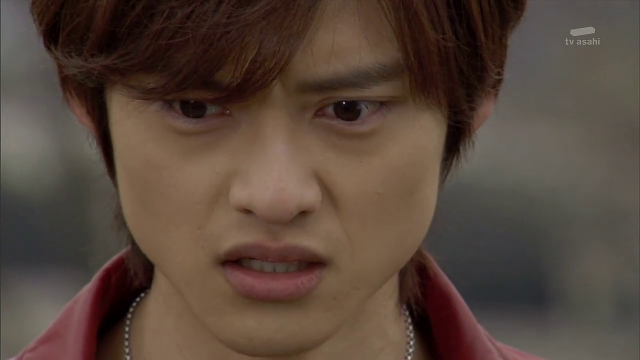
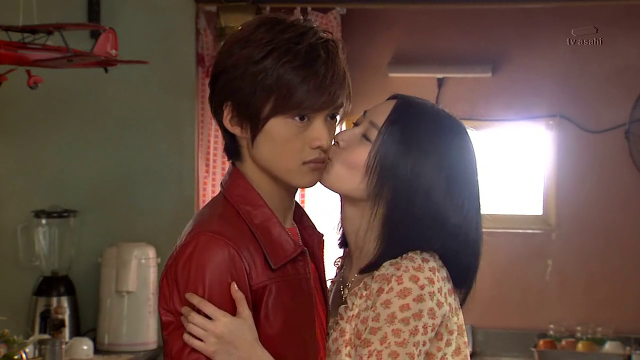
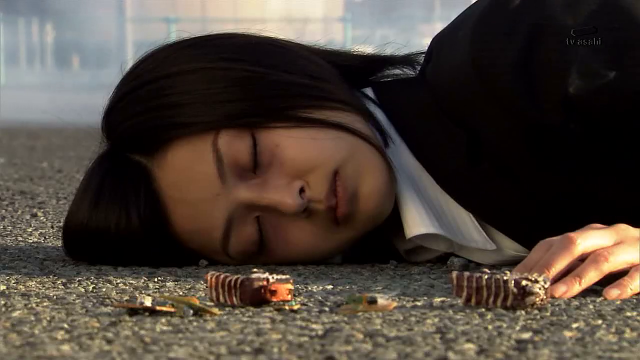
Onore Ryu!! >:o
Ryu, unlike Shotarou and Phillip, works with the Fuuto Police Department, is a much darker and edgier character. He's the stoic, brute, anti-hero. Yet despite his stern nature, he's the butt-monkey of jokes at times, which makes for some funny situations (like the end of the Accel movie) because of his personality. His motivation for becoming a Kamen Rider was revenge for the death of his family. His development circles around him growing from hating the enemy and wanting revenge, to learning that revenge and hatred isn't the answer. After his character development, he also helps Shroud grow from similar problems. I think this development is pretty well done, and he works as both a stand alone character and a supporting character.

Among the main hero characters Akiko is the one character that I had some issues with, especially in the early episodes. Her somewhat bitchy, spoiled brat attitude made her annoying and hard to like initially. However, as the series progresses, she turns out to be not all that bad. After the Movie War 2010 (with Decade), she did manage to grow on me. Her spoiled attitude becomes an afterthought. She shows that she actually has some clever plans (like with the nightmare dopant), and she had some of the better episodes as of the series, such as episodes 9 & 10, and the doll episodes).
Sonozaki Family (Museum)

The main villains of this series is the Sonozaki family, former paleotologists who have based their museum and the GaiaMemories on the creatures they formerly excavated. The Sonozaki family sales the GaiaMemory behind the scenes to ordinary humans who have an issue such as revenge or even wanting to perform magic tricks for their family. Their ambition is to improve human evolution to avoid its extinction. This doesn't sound so bad, but they distrubute the GaiaMemories to other human beings to experiment their effects on them, and the Sonozaki family doesn't care if their customers die in the process. In fact, they see this as an opportunity to weed out the weaker-minded humans.
The head of the Sonozaki family is the family's father, Ryubee. Ryubee is the well-intentioned extremist who gave up his humanity for his ambition. To carry out his intentions, he used his family to his advantage. As a big bad, Ryubee is pretty good. He's a madman who only cares about his own ambitions, and cares less for human life just as long as his goals are reached. However, he's not quite the best villain in W.
Ryubee has two daughters, Wakana and Saeko. Next to Phillip, Wakana was my second favorite character in W. Early on she acts like a spoiled bitch, but she changes after meeting Phillip in a case that revolves around her. She's rather easy to like because Wakana was being pushed into a corner. Unlike the rest of the family, Wakana cared less about the family's business of distributing the GaiaMemories, and more about doing her own hobby (a radio DJ). She's pushed into a corner by her father who wants to use her to create the ultimate being and become the Earth's queen. She's also a tragic character, and it's really heartbreaking when her father successfully brainwashes her.
Ryubee's eldest daughter, Saeko, is the main henchwoman for most of the series until Wakana is brainwashed. Saeko has her own ambitions. She hates her father due to her upbringings, and also gets jealous of Wakana because she's chosen by Ryubee to be his successor. Because of her jealousy, she tries to take control of Museum anyway she can, rather it would be marrying a powerful boyfriend or by force, to make her father recognize her power. However, she ends up saving Wakana when she realizes her father wouldn't recognize her in the way that Wakana was going to die. Saeko is bitchy and even slutty, but I think this makes her a good villain. This makes her the person you love to hate, which is what villains are suppose to do.
Then there's Shroud, mother of Saeko and Wakana and Ryubee's ex-husband.
She cares only about protecting her son, and uses the Narumi detective agency as tools to do so. She arms both W and Accel with weapons, and sees Ryu's hatred of Isaka as a useful tool in order to protect her son. When training Ryu in preparation for the Trial memory, she tries to teach him that hatred is the motivation he needs.

Among one of Saeko's boyfriends was Kirihiko, who was initially a GaiaMemory salesman. Saeko ends up marrying Kirihiko, seeing him as a tool to achieve her own ambitions. Kirhiko claims to love the city of Fuuto, and seems to believe what he's doing by distributing the GaiaMemory is for the good of the city. However, he has an anti-villain tendency that surfaces he finds out that not only were a group of teenagers given a GaiaMemory, they were also used as test subjects for it. As a villain, Kirihiko is ok. He has some depth to his character, mostly for having his own standards as to who should be given a GaiaMemory. However, other than his development as an anti-villain, Kirihiko doesn't do much other than acting as a standard henchman.
Other villains
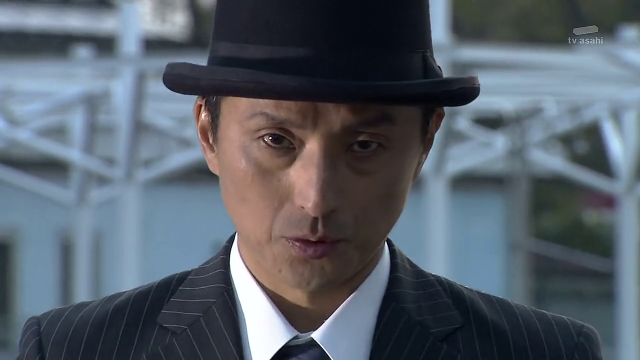
For me the best villain in W is Isaka Shinkuro. Like Saeko, he's trying to surpass Ryubee and defeat him. However, what separates him from Saeko are the methods he uses. He uses vicious means to obtain these powers, by testing various memories not only on himself but also innocent civilians whom he knows will die as a result of the testing. He killed Ryu's family while experimenting with the weather powers. He uses Saeko as a tool so he can get close to her father, and also because he saw Saeko as a powerful ally.

The other main villain that's not a member of the Sonozaki family is Jun Kazu, a researcher for Foundation X. He sponsors the Sonozaki family's research into GaiaMemories. After the defeat of Sonozaki Ryubee, Jun tries to purify humanity by whiping out all of humanity that's not compatible for GaiaMemories. Jun's an ok villain. He's menacing and vicious, much like Isaka, but he comes in late in the series. He feels like an add-on villain, much like Senki from Gaoranger. He's not a bad villain, but he's also a villain that W didn't necessarily need either. Still, I felt he was used well and helped explained where the GaiaMemories come from. At the least his character was vital for the group NEVER, which was awesome in two separate W movies.
My Rating
Overall, I give W 9/10. It's a pretty solid series packed with a lot of good action, good characters, villains, and an excellent story. I definitely recommend it to toku fans or anyone who's a fan of detective shows.
